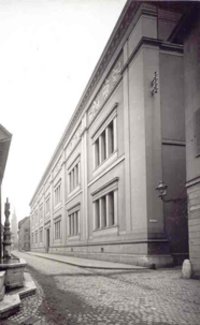1850 – Friends of science and of Basel’s museums
The Natural Science Society of Basel (Naturforschende Gesellschaft Basel), established in 1817, and the Historical and Antiquarian Society of Basel (Historische und Antiquarische Gesellschaft Basel), founded in 1836, primarily aimed to meet the educational needs of Basel’s citizens. As a secondary purpose, they also supported the university, divided by various fields of knowledge. This support especially benefited the university collections – and in the 1840s, the large museum building, which in its own way also served as a university building.
From the experience of threats to university property following the 1833 cantonal separation, and a general appreciation of museums, a broad movement emerged within Basel’s urban elites, closely connected with the university. This movement led to the founding of a Museum Association in 1841 for the construction of a new museum, and in 1850, a Volunteer Museum Association. The dual purpose of this latter association was to support further museum operations, primarily through acquisitions, and to foster an appreciation for science and art among Basel’s residents. The initiative stemmed from three individuals: University Chancellor Peter Merian, chemistry professor Christian Friedrich Schönbein, and architect Melchior Berri. Fifty people attended the founding assembly, electing Schönbein as the association’s first president; he held this office until 1869. Other, similar associations were established, such as the Basel Chemical Society in 1907 and the Geographical-Ethnological Society of Basel in 1923.



